Join me today as we take a trip to Kennett Square, Pennsylvania, to visit one of the great gardens in the world. The showpiece of Pierce DuPont, Longwood Gardens is on the short list of garden tours you absolutely must take.
Longwood Gardens is not just an exhibition garden; it's also a teaching and experimental garden. Case in point: the vegetable gardens. Beautifully tended plots, full of perennial vegetables and prepped for the annuals, lie in wait. Weathered wood structures blend seamlessly into the landscape but offer architectural interest and practical support.
Get ideas for your own yard from some of the trellising, fencing and spacing ideas from the gardens of Longwood.
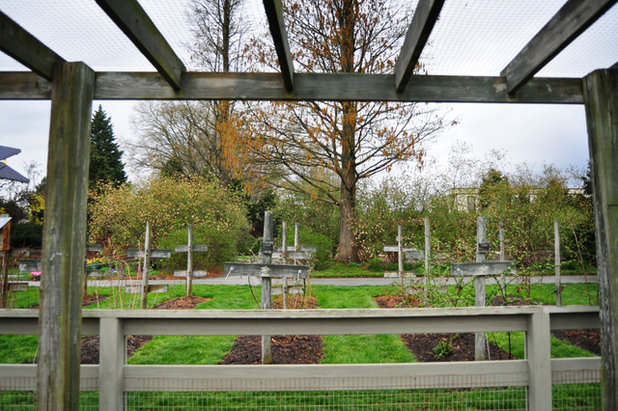
Amy Renea
The vegetable garden is placed near an out-of-the-way walkway at the back of Longwood, but in many ways it could be the showpiece. With fencing on all sides to keep out predators, the theme of gently weathered wood begins. Notice how the sight lines of the arbor overhead and stakes in the interior are running perfectly parallel.
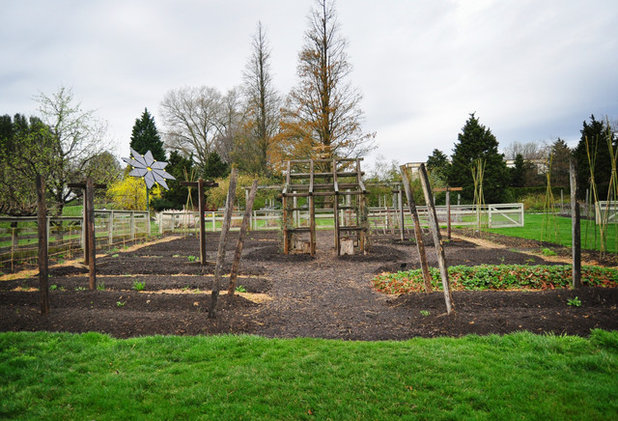
Amy Renea
Once you enter the inner garden, you will notice the closely cut grass, freshly turned soil and perfectly cut edges. In between the grass and soil is a narrow trench that is angled outward. This is the classic edging for garden beds, keeping weeds out and creating a beautiful, clean line. The only problem: It needs to be cut at least once a year to maintain the look.
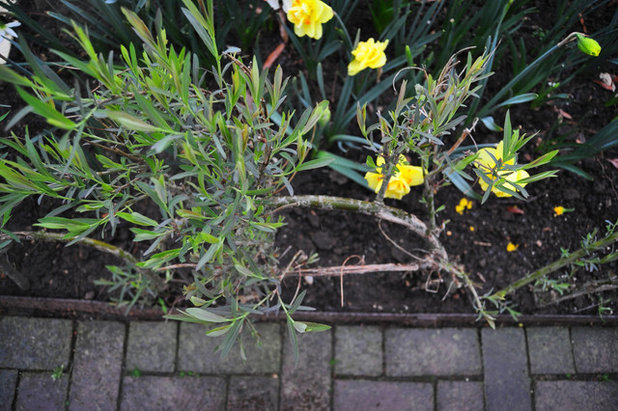
Amy Renea
Another beautiful touch are the twig fences that are still living. Simply plant a flexible plant that roots easily, such as willow, and tuck the top into the ground. The plant will grow with both ends tucked into the ground.
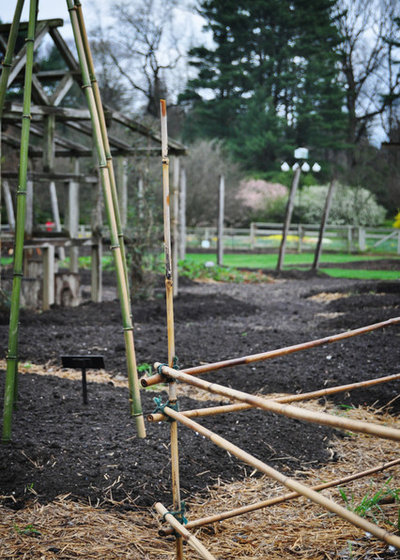
Amy Renea
Turn the corner and you will stumble upon the asparagus bed. Asparagus spears appear first in the spring, and then the ferny foliage emerges and grows all summer long. These simple bamboo stake fences help restrain the ferns from falling over into the walkway.
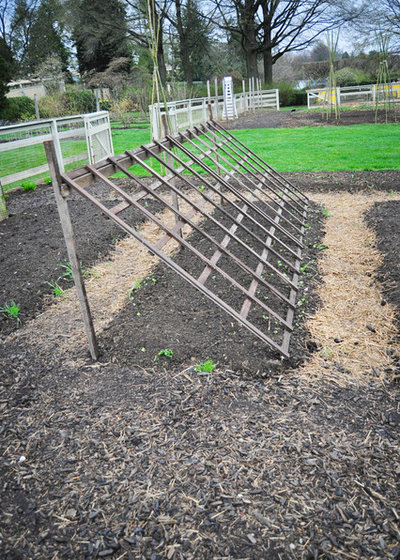
Amy Renea
Across from the asparagus patch is a trellis laid on an angle for climbing plants. This trellis is a good solution for heavier climbers such as squash and watermelon because of its thickness and strength of the wood panel. Once the vines start climbing the trellis, they provide shade for lettuces underneath.
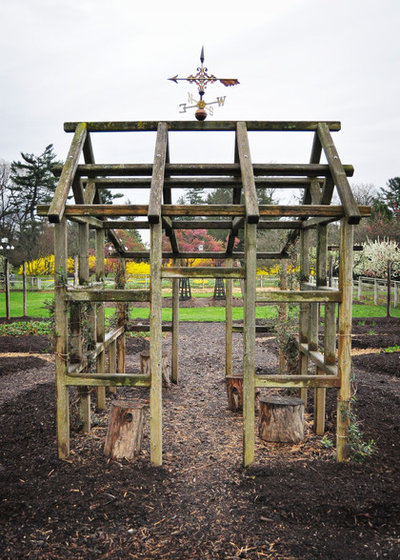
Amy Renea
This beautiful structure is the centerpiece of the garden and works under the same premise, creating structure and shade simultaneously. Climbing twiners such as peas and beans can easily scamper up the sides of this house, creating room inside for shade-loving veggies.

Amy Renea
Notice how all of the beds and pathways radiate out from the centerpiece. In your garden, perhaps you could orient the garden around a sundial, branch tepee planted with morning glories or simply a round planting bed chock-full of annuals.
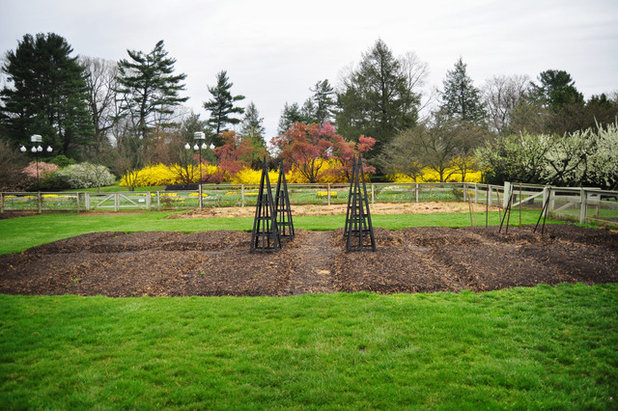
Amy Renea
On the far side of the garden are yet more freshly dug and cut beds. Notice the trenches cut out to separate beds within beds, and the obelisks that provide a vertical line to the horizontal beds. The obelisks offer an opportunity to mix in a few ornamentals such as clematis or climbing hydrangea to break up boxes of cabbage and kohlrabi.
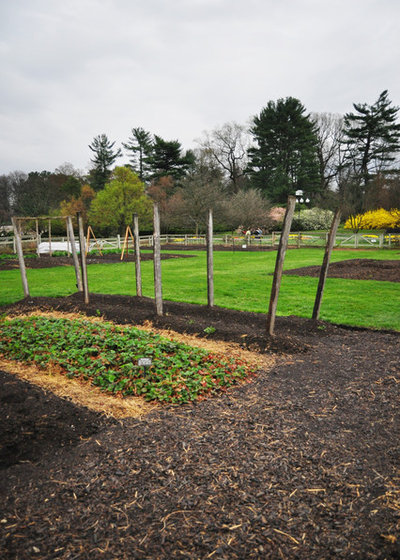
Amy Renea
Whether you are planning a simple veggie plot or a full-out minifarm, borrow a few design techniques from the masters. Will you cut trenches in your onion beds? Perhaps you'll add a vertical element for interest or to create shade for peas and lettuce. Maybe you will even be inspired to create your own grand structure and make the veggie beds the true centerpiece of your garden.
More:Feast Your Eyes on Edible Gardens
Cream-of-the-Crop Vegetable Gardens





